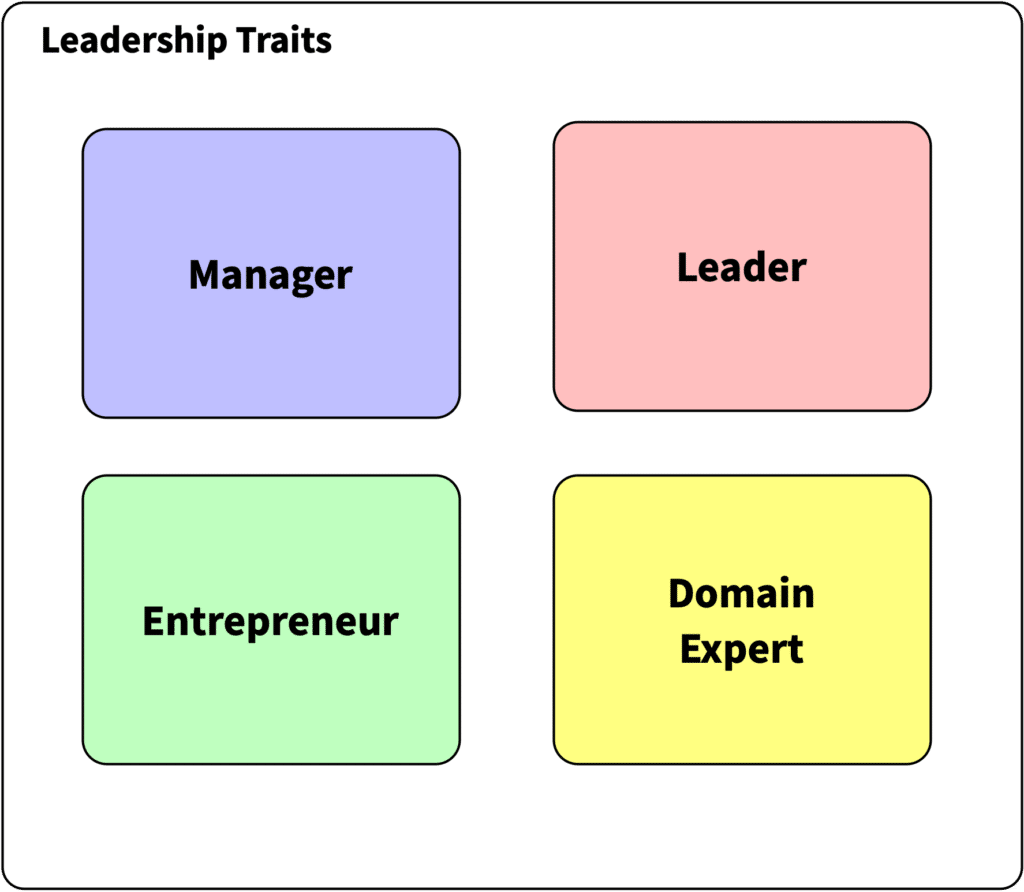Leadership is about myself, my teams and my organization. This has become more and more complex over time.
In an industrial environment, leadership was dominated by the need to be efficient to ensure operational excellence. This is the traditional domain of management. This requirement has not disappeared, but it is no longer the only or dominant need.
As the pace of change increases, the ability of organizations to change and disrupt, to operate in an uncertain environment, becomes a critical success factor in sustaining performance. It requires entrepreneurship at all levels.
Organizations must be able to learn quickly, adapt, and disseminate new insights and knowledge among their members. They depend on the initiative, motivation and loyalty of their members.
This means that management tasks are also growing. The tasks can be seen as four aspects (“traits”):
- As a Manager, you will provide a productive, effective, and innovation-friendly environment. This includes structures, leadership and a safe space.
- As a leader, you help your employees grow.
- As an entrepreneur, you make sure your business is profitable and you manage risk and uncertainty.
- As an expert you solve critical technical and professional problems together with your team.
Not everyone has the required skills equally, and perfection in each is not required in all environments. Rather, each position has a special mix of the different aspects. Competence models have been developed for this purpose. Conventional competency models fulfill a multitude of requirements and are therefore usually complex and unwieldy to handle outside of specialist circles (i.e. HR).
The concept offers an alternative to classical competence models – not limited to management positions, but with a limited scope. It is easy to use, which especially takes into account the high dynamics in lean-agile organizations. Use cases include job placements and targeted skill development.
The problem with competency models

Competency models have a number of stumbling blocks in dealing with them.
- Competency models are costly to develop. In most cases, they claim to be applicable across all areas. This bloats them and makes further development slow. As a consequence, their everyday suitability for a specific job suffers.
- As a consequence, it is difficult to do justice to the claim of being a “model” – many competence models are more catalogues than a comprehensible implementation of a model.
- The usability for concrete decisions is limited. For example, justifying staffing from competencies is too static, number-based, not very people-centered, and leaves out essential aspects.
How to use the Four Traits
As an example scenario, here is an idealized staffing:

- A quick requirements profile is created for a role, showing the relative weighting of the four aspects, for example on a scale of 1 to 5 per aspect or as a percentage that adds up to 100.
- The same is done for a candidate (or together with a candidate). Various aspects such as talent/potential, preferred field of work or types of work, skills and knowledge can be taken into account.
- Only in a second step are the tasks and competences related to the skills and knowledge. This second step serves as a validation and as a simulation of the induction – so the result is not only an informed decision but also a list of actions.
The advantage is an easier way to make quick assessments. In addition, the visualization makes the decision-making process very transparent.
